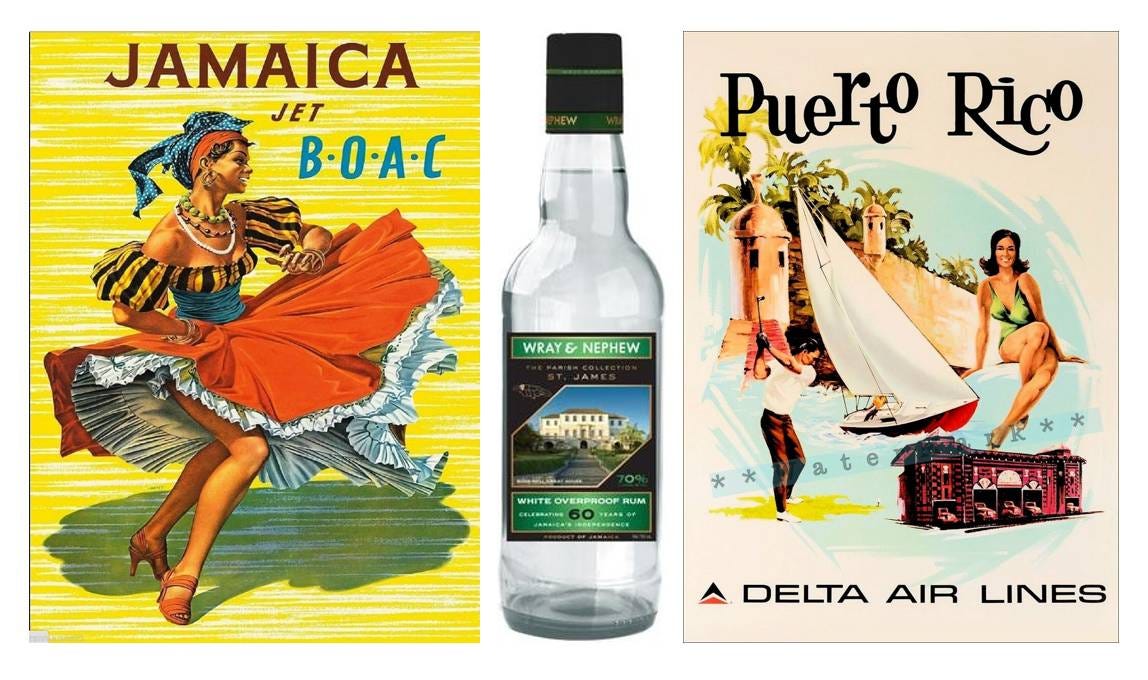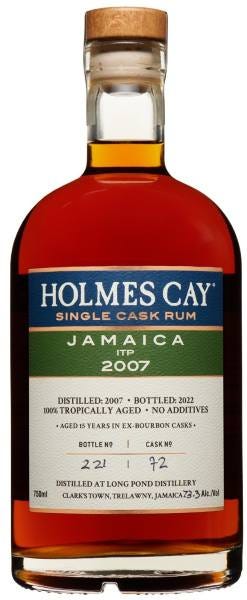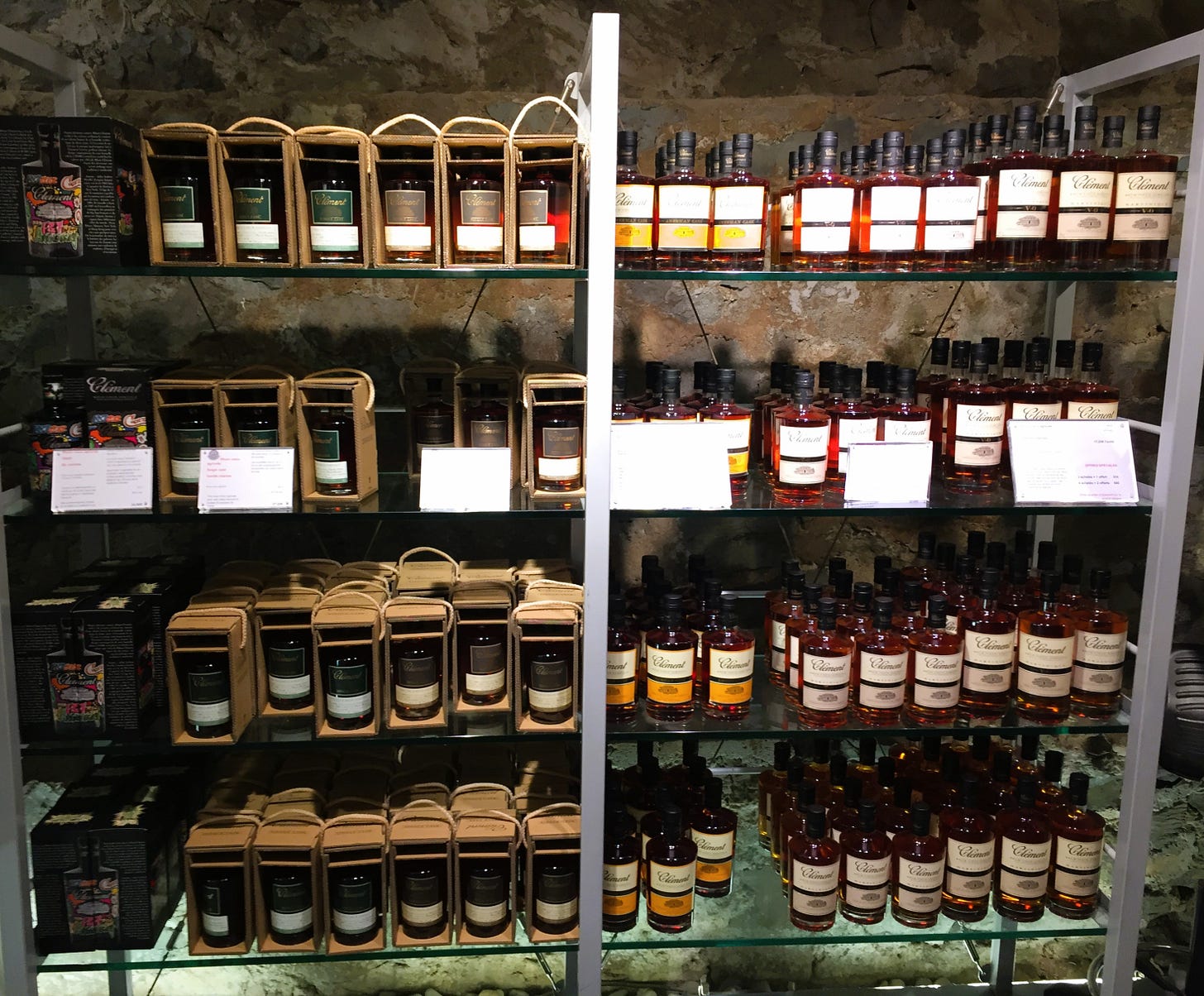Good Places for Visitors to Buy Rum in the Caribbean - Part 1
At least once a week, someone in the online rum groups asks, “I’m going to Barbados soon. Where are the best places to buy rum?”
If not Barbados, its Jamaica, Martinique, Puerto Rico, and most other Caribbean locales.
Having traveled to the Caribbean many times and having returned with suitcases bulging with rum treasures, I have some words of hard-won wisdom. The key is to set your expectations appropriately and do your homework in advance.
It’s only natural to assume there’s a treasure trove of exceptional rums at your destination, just waiting to be scooped up. The lure of undiscovered rums at bargain prices is strong. While there may have been some truth to this 30 years ago, it’s practically impossible to find undiscovered rum gems today. Rum icons like Ed Hamilton, Luca Gargano, and John Barret made it their business to find unheralded Caribbean distilleries and bring their rums to Europe, the Americas, and Asia. A new class of independent bottlers like Holmes Cay, Down Island Spirits, and Raising Glasses followed in their footsteps.
The unvarnished reality today is that Caribbean distilleries that don’t export their premium rums somewhere are a vanishingly small breed. But don’t despair! I have much to share on the topic, so I’ve broken it into two parts. (Part 2)
Setting Expectations
Suppose you’re a European or a North American living in a big city. In that case, you can (usually) find dozens if not hundreds of rums at high-end liquor stores like Binny’s in Chicago, Hi-Time Wine Cellars in Southern California, or The Whisky Exchange in London.
These stores often stock five or more core expressions (each) from Mount Gay, Appleton, and El Dorado, plus several of their limited editions. You might think, “If my local store has all these rums, imagine what else is in Barbados / Jamaica / wherever!”
Unfortunately, “not much more” is often the answer. A brand’s upper-tier and limited-edition expressions are primarily targeted at export markets, not stores in their home country. Except for distillery visitor centers and certain duty-free shops, you’ll be hard-pressed to find many rare bottles you seek during your Caribbean stay. Most Caribbean liquor stores aren’t targeting rum geeks with their selection. I’ll cover the exception to this, the French Caribbean, in Part 2.
What you will find in a typical Caribbean liquor store is a reasonable selection of whiskies, gins, and vodkas alongside the entry-level to mid-tier expressions of locally made rums. In Jamaica, you can easily find Wray & Nephew White Overproof, Kingston 62 Gold, and most of the Appleton line, but you’re unlikely to find Appleton 1994 Hearts in a store. The vast majority of Caribbean liquor store customers aren’t hunting for $100+ limited-edition rums.
If your plan is to stock up on more budget-friendly expressions like Appleton 12, Mount Gay XO, or Havana Club 7, don’t assume they’ll be less expensive in the Caribbean. I’ve seen many people’s faces turn sad when they return home with rum, only to find they’re available for the same price or less at home. Do a quick scan of prices at home before you find yourself in the Caribbean with spotty cellular service, trying to figure out if you can get a particular expression back home.
Key takeaway: save your suitcase space for things you can’t get at home unless they’re a crazy bargain.
Private Label / Independent Bottler Brands
Another untrue assumption is that you can buy any rum where it was produced. Smith & Cross, the iconic Jamaican rum, isn’t on store shelves in Jamaica. It’s blended in Amsterdam and bottled elsewhere. It doesn’t make sense to ship it back to Jamaica to compete with locally available rum. The same goes for Doctor Bird, an American brand that secondarily ages Jamaica rum in Michigan.
Among the most famous American bottlers of Caribbean rum is Ed Hamilton, whose Ministry of Rum Collection is highly regarded. Hamilton buys rum from Jamaica, Guyana, the Dominican Republic, and other locales. He imports it into the US, blends it, and bottles it in New York. None of Hamilton’s rums make a return trip to the Caribbean.
It’s similar for highly sought-after independent bottler brands like Velier, Transcontinental Rum Line, The Colours of Rum, Holmes Cay, Rolling Fork, Samaroli, and others. You won’t find Velier’s Demerara releases in Guyana, you won’t find Holmes Cay 2007 ITP in Jamaica, and you won’t find Rolling Fork’s 9-Year Foursquare in Barbados.
To get an idea of whether a particular brand is available in the Caribbean, ask: “Does this brand own a distillery where I’m going?” If not, don’t count on finding it in local stores. What you will find at Caribbean liquor stores and markets are the house brands of the local distilleries. You may also find the house brands of a few other Caribbean countries. For instance, El Dorado and Angostura are available in many Caribbean destinations.
Distillery Visitors Centers
As you might expect, your best bet for finding interesting rums is usually distillery visitor centers. Making the trek to the distillery can be well worth it. However, some distilleries don’t have public tours. If so, they’re less likely to have a visitor center. To be safe, check the brand/distillery’s website or social media to confirm they have public tours and/or a visitor’s center.
Also, don’t assume a distillery is a 7-day/week operation. Some may only be open Monday-Friday, and the Caribbean has many public holidays which differ from island to island.
What you’ll find at a distillery’s visitor center varies tremendously. Small, independent distilleries tend to have a narrow selection. In contrast, large, corporate-backed distilleries like Mount Gay (Remy Cointreau) and Appleton (Campari) are likely to have a wider range of rums, including distillery-only expressions. Some of the Martinique and Guadeloupe distillery visitor centers will blow your mind. More on this in Part 2.
Be aware that pricing for mainstream expressions at a visitor center may be higher than at local markets or even back home. If time permits, do a quick price-check at local markets and liquor stores before visiting the distillery.
That’s all for Part 1. In Part 2, I’ll talk about duty-free stores, the two islands with the biggest rum selections, a few local-only gems you might overlook, and practical, battle-tested tips for getting your rum home safely without stressful surprises.







In 2019 while visiting Hampden, in their tiny visitor center they had 2 bottles of the original Great House Distillery Edition (the first of the series). They told me they were the last 2 they had left so I bought them both. Came to find out there were only 3000 made mostly for special events in Europe. Got lucky that day! Other than that, nothing found anywhere other than Kingston 62, that I couldn’t find at home.
Flying home from Grand Cayman in February, I was delighted to find some well priced rums in the Duty Free store next to our gate. This was the first time I found any real value from a duty free. Ended up with Worthy Park Single Estate 2006 (12 year aged) for less than half the US store price. And the shopping could have continued.